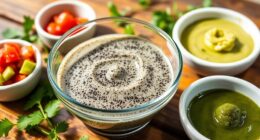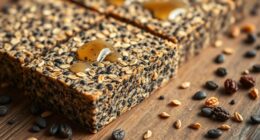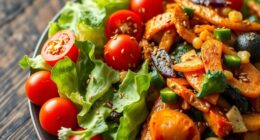Did you know that chia seeds are packed with essential nutrients and can be easily grown and harvested in your own backyard?
In this guide, we’ll show you how to successfully harvest chia seeds, step by step. Our evidence-based tips and practical advice will help you identify the perfect time to harvest, prepare the plants, and handpick the ripe seeds.
Plus, we’ll share expert tips on drying and storing your chia seeds for long-lasting freshness.
Let’s get started on your chia seed harvesting journey!
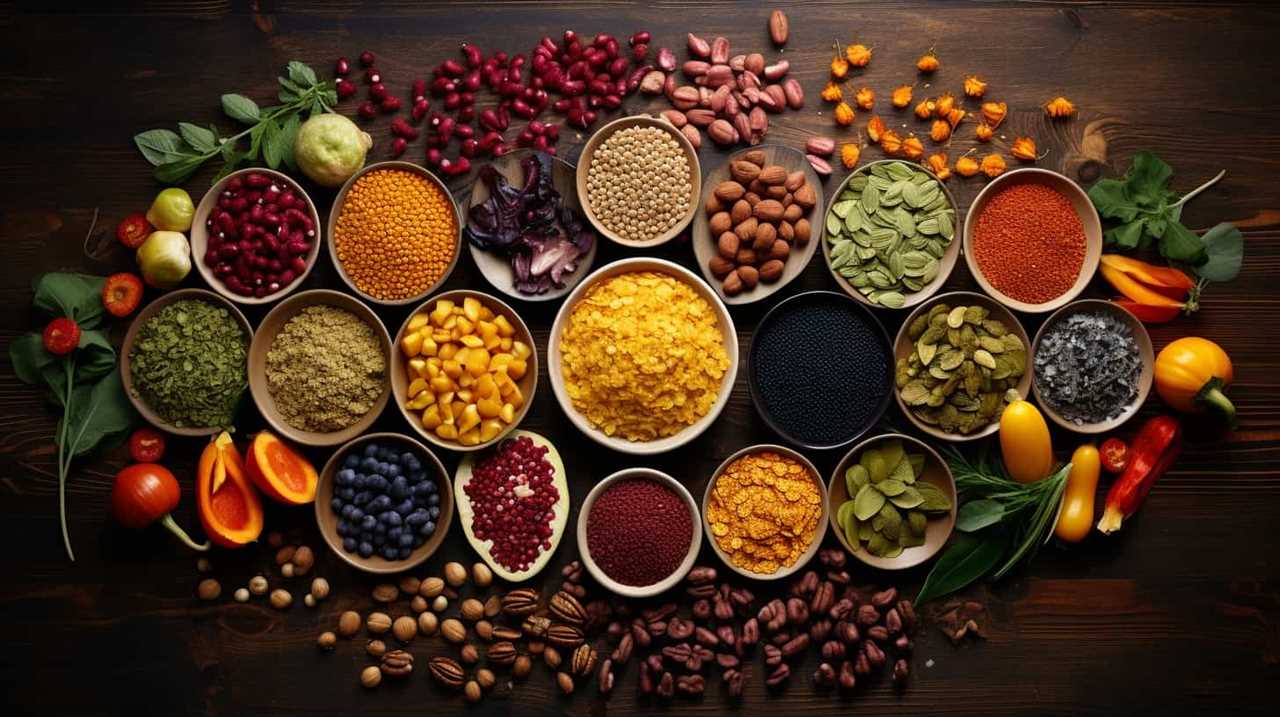
Key Takeaways
- Chia seeds require warm temperatures between 70-80°F (21-27°C) for proper development.
- Monitoring soil moisture levels is vital for chia seed maturity.
- Gently touch the seeds to evaluate seed moisture, they should feel dry to the touch.
- Harvest chia seeds when the plant is fully matured with dried flower heads and brown seeds.
Choosing the Right Time to Harvest
We carefully consider the optimal timing for chia seed harvest to ensure maximum yield and quality. Maximizing chia seed yield is crucial for those who desire to serve others with the best possible products.
Several factors affect chia seed maturity, and understanding these can help determine the right time for harvest. Firstly, temperature plays a significant role. Chia seeds require warm temperatures for proper development, typically between 70-80°F (21-27°C).
Additionally, the length of daylight hours affects the seed maturity process. Chia plants need a certain number of hours of daylight to reach full maturity.
Lastly, monitoring the moisture levels in the soil is vital. Chia plants thrive in well-drained soils, and excessive moisture can delay seed maturity.

By carefully considering these factors, we can ensure that we harvest chia seeds at the right time to maximize yield and quality.
Now, let’s move on to identifying signs of ripeness.
Identifying Signs of Ripeness
To determine the optimal time for harvesting chia seeds, let’s now delve into the process of identifying signs of ripeness. Here are some key indicators to help you evaluate the ripeness of your chia seeds:
-
Evaluating seed moisture: Gently touch the seeds and check for dryness. They should feel dry to the touch and not sticky or moist.
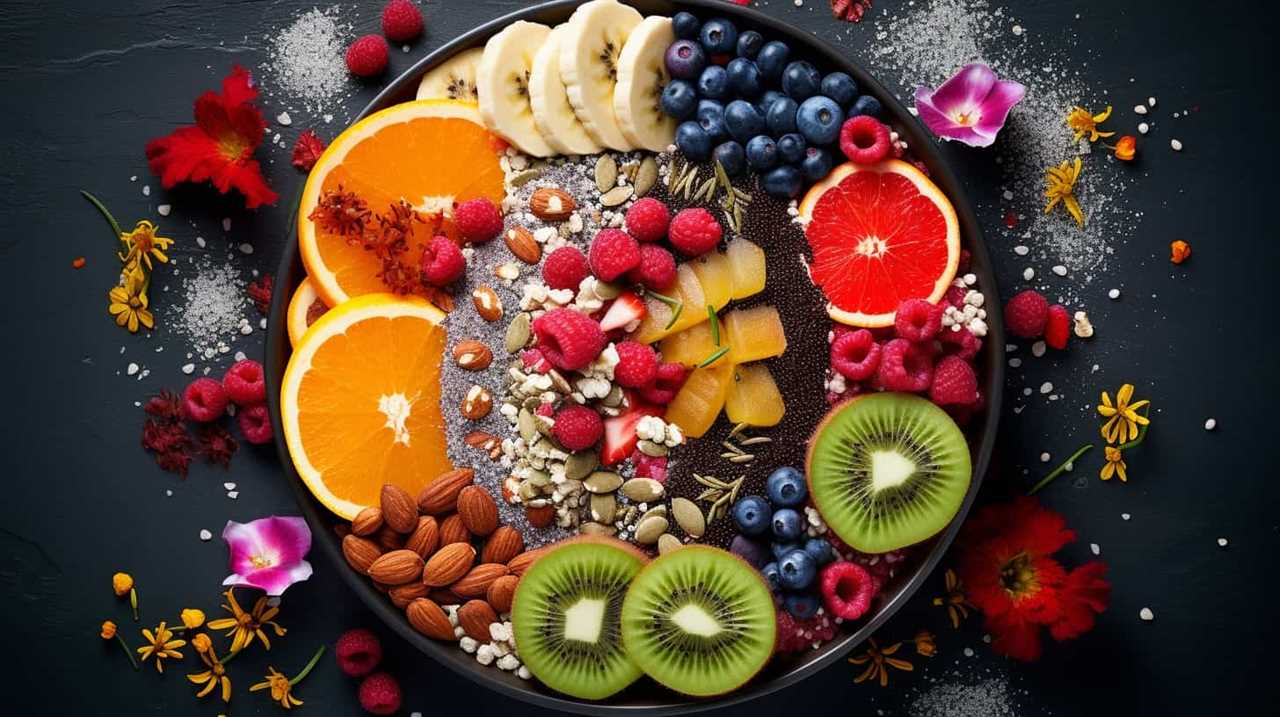
-
Testing seed coloration: Look for a uniform color throughout the seeds. They should appear dark brown or black, indicating full maturity.
-
Observing seed size: Mature chia seeds tend to be larger in size compared to immature ones. Look for plump and well-developed seeds.
-
Monitoring seed shedding: As the chia plant reaches maturity, the seeds will start to fall off the plant naturally. Keep an eye out for seed shedding as a sign that they’re ready for harvest.
By keeping these signs in mind, you’ll be able to confidently determine the ripeness of your chia seeds and harvest them at their peak freshness.
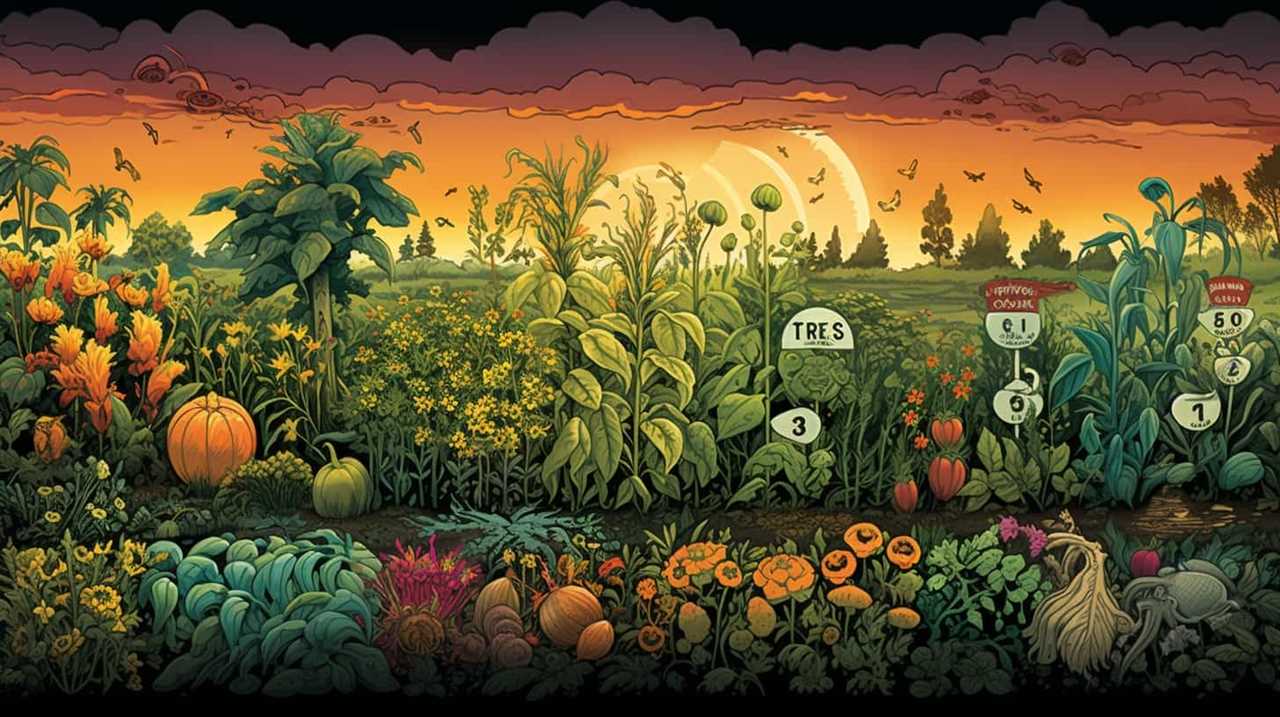
Happy harvesting!
Preparing the Plants for Harvesting
Once the signs of ripeness have been identified, it’s important to take the necessary steps to prepare the chia plants for harvesting. To ensure a successful harvest, proper soil preparation is essential.
Start by clearing any weeds or debris from the planting area and loosening the soil using a garden fork or tiller. Chia plants thrive in well-drained soil, so consider adding organic matter such as compost or aged manure to improve soil structure and fertility.
Additionally, pest control is crucial in maintaining healthy chia plants. Check for any signs of insect infestation or disease and take appropriate measures to address them. This may involve using natural pest control methods or organic insecticides. Regularly monitor the plants for any signs of damage and promptly address any issues that arise.
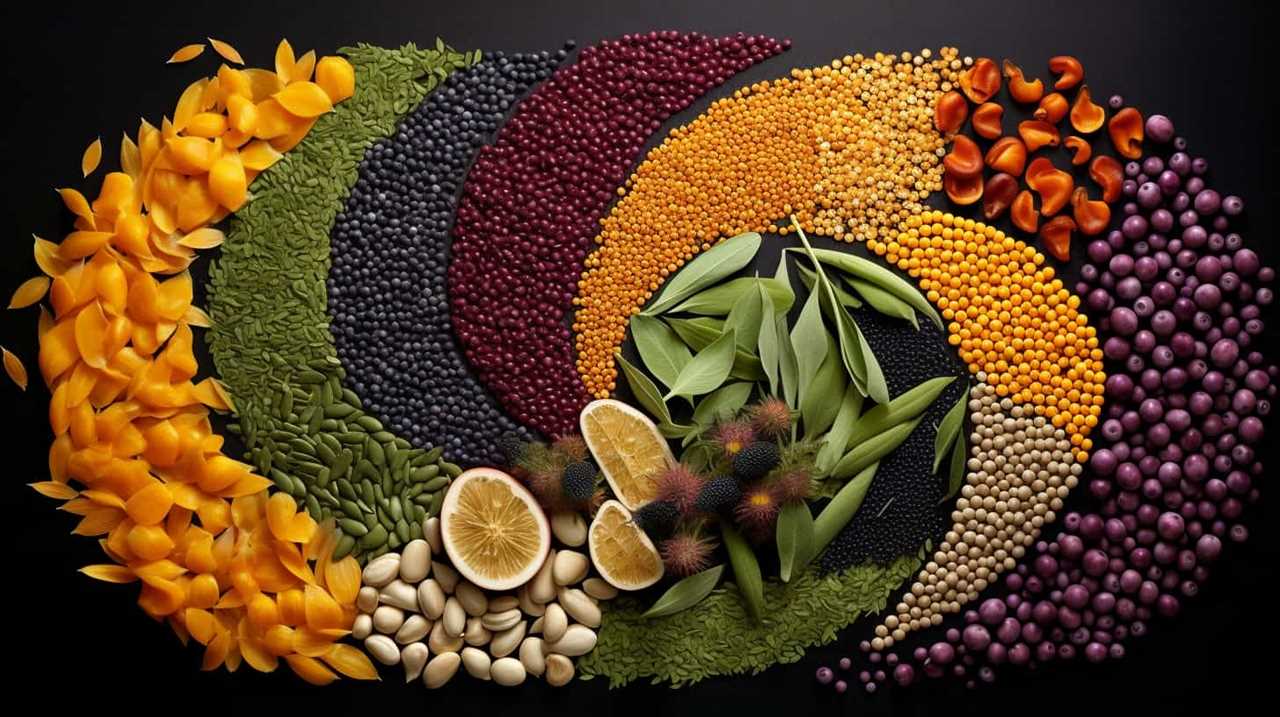
Harvesting Chia Seeds by Hand
Efficiency is key when it comes to harvesting chia seeds by hand. To maximize your chia seed yield during hand harvesting, consider the following tips:
- Begin harvesting when the chia plant is fully matured, indicated by the dried flower heads and brown seeds.
- Use a pair of sharp scissors or shears to cut the seed heads off the plant, making sure to leave a few inches of stem attached.
- Place a collection container, such as a bucket or bag, underneath the plant to catch the falling seeds.
- After harvesting, gently rub the seed heads between your hands to remove any remaining seeds.
While hand harvesting chia seeds may require more time and effort compared to mechanical harvesting, it offers several advantages. It allows for selective harvesting, where only ripe seed heads are collected, ensuring better seed quality. Additionally, hand harvesting allows for a more intimate connection with the plants and a deeper appreciation for the process.
Drying and Storing Chia Seeds
After hand harvesting chia seeds, the next step is to properly dry and store them. To ensure optimal drying, spread the seeds in a single layer on a clean, dry surface. Avoid direct sunlight and high humidity, as they can affect the quality of the seeds. Allow the seeds to air dry for about two to three days or until they’re completely dry and crispy.
Once dried, transfer the seeds to an airtight container to prevent moisture and pests from entering. For long term storage, store the container in a cool, dark place, such as a pantry or refrigerator. This will help maintain the freshness and nutritional value of the chia seeds for up to two years. Remember to label the container with the date of harvest to keep track of their freshness.
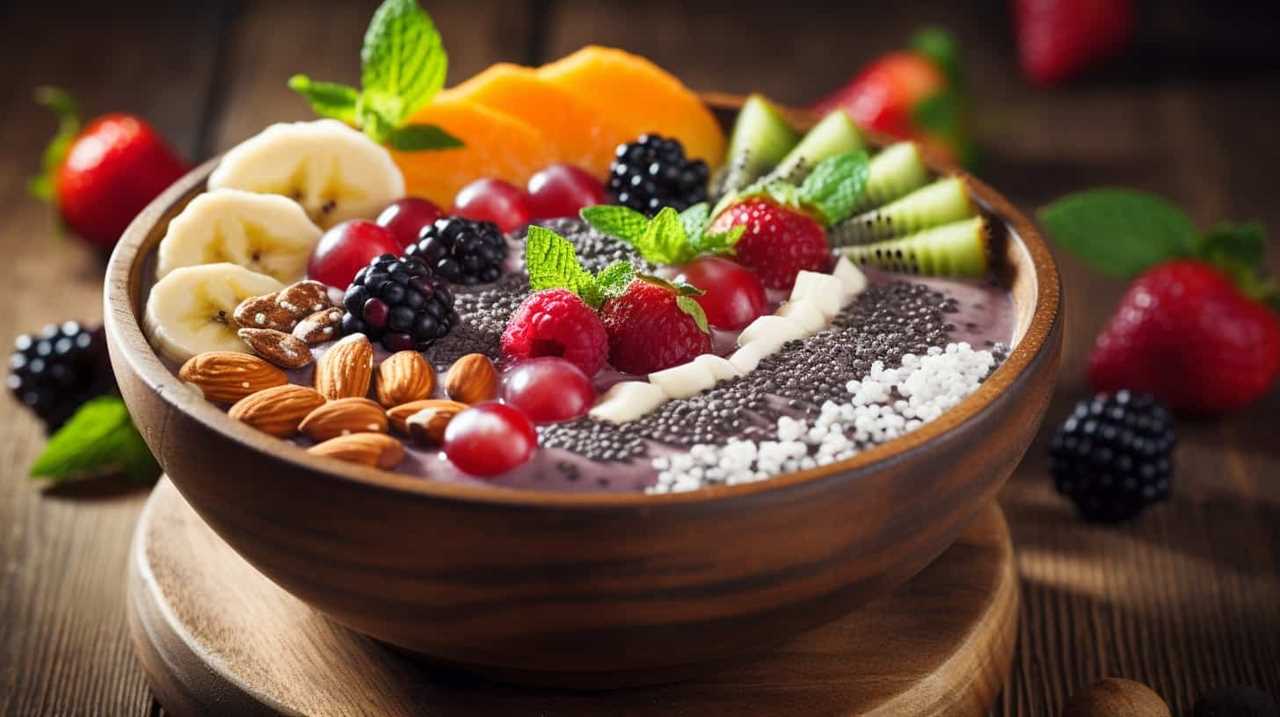
Frequently Asked Questions
Can Chia Seeds Be Harvested From Any Type of Chia Plant?
Yes, chia seeds can be harvested from any type of chia plant. However, there are challenges in chia seed cultivation, but the benefits of harvesting them at their peak ripeness outweigh the difficulties.
How Long Does It Take for Chia Seeds to Ripen From the Time of Flowering?
When is the best time to harvest chia seeds? How do you know if chia seeds are ready to be harvested? It usually takes about 2-3 weeks for chia seeds to ripen from the time of flowering.
Are There Any Specific Tools or Equipment Required for Harvesting Chia Seeds by Hand?
When harvesting chia seeds by hand, there are a few essential tools that can make the process easier. Some common tools include a mesh screen, a bucket, and a pair of gloves. These tools help prevent common mistakes and ensure successful harvesting techniques.
Can Chia Seeds Be Harvested in Multiple Stages, or Is It Best to Wait Until All Seeds Are Fully Ripened?
Yes, chia seeds can be harvested in multiple stages. However, it is best to wait until all seeds are fully ripened for optimal flavor and nutritional value. Patience and timing are key in successful chia seed harvesting.
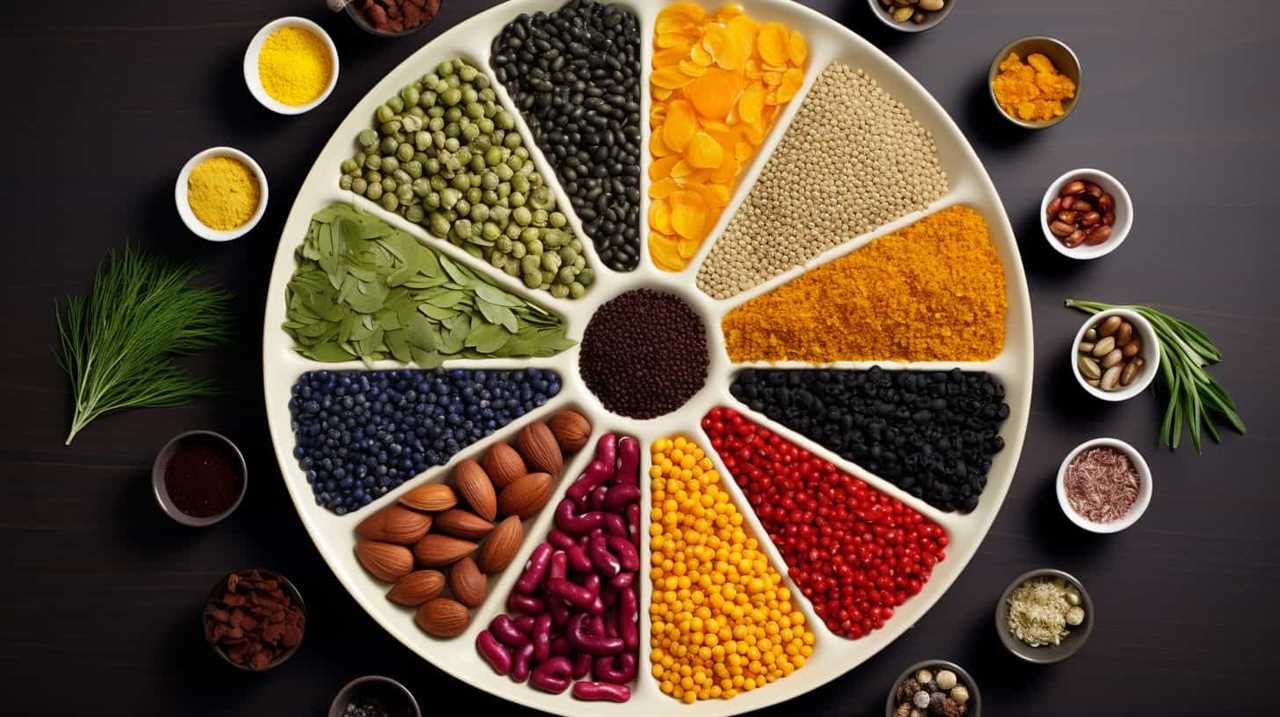
What Is the Recommended Method for Storing Chia Seeds to Ensure Their Freshness and Longevity?
To ensure freshness and longevity, store chia seeds in an airtight container in a cool, dry place. This preserves their nutritional benefits and extends their shelf life. Incorporating chia seeds in recipes adds a healthy boost to your meals.
Conclusion
In conclusion, successfully harvesting chia seeds requires careful timing, keen observation, and proper preparation. By waiting for the right moment when the seeds are fully ripe and easily detach from the plant, you can ensure a bountiful harvest.
Gently handpicking the seeds and allowing them to dry thoroughly will guarantee their longevity. So, venture into your garden, let the vibrant chia plants guide you, and enjoy the satisfaction of a well-harvested crop.






